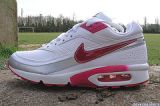The Importance Of Right Shoes For Fitness Workouts
Anatomy Of A Running Shoe:
Toe-off: Made of the same material as the out sole, it is the elevated portion that provides leverage for the forefoot to push off.
Out sole: The treaded layer on the undersurface of the shoe, usually made of carbon rubber or similar material, to resist wear and tear and provide traction.
Upper: Made of leather or breathable, light synthetic material to reduce head buildup within the shoe. A well-cushioned upper should protect the feet against shoelace pressure, rubbing, and irritation.
Mid sole: The most important part of any running shoe, it is the cushioning and stability layer between the upper and out sole. Made of ethylene vinyl acetate (EVA), polyurethane (PU) or both, its function is to absorb impact and limit pronation(rolling in) of the foot.
Heel counter: This firm, inflexible cup is built to control the motion of the rear foot and minimize injuries.
First Issues First:
A shoe is a shoe, so why shell out a bomb on trainers? Here is the deal, when you run,the outside of the heel strikes the ground first (supination), then the foot rolls inward and flattens out along the longitudinal arch (pronation). This seemingly simple movement exerts a lot of pressure on the heels, shins, and knees. When you factor in your weight, which is also bearing down on those areas, it makes sense to settle for a pair that can reduce some of the impact. What distinguishes a running shoe from a cross trainer or a walking shoe,is that it is lighter (800 gms or less) yet provides extra cushioning to absorb all that pounding, has treads in the out sole that are more defined and run in one direction. A rigid forefoot that gives it stability and a high toe-off that offers better leverage for lifting off.